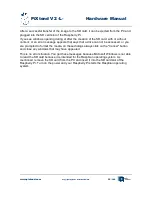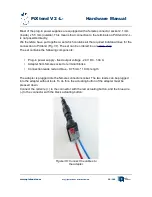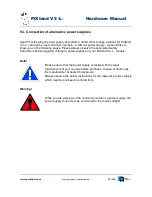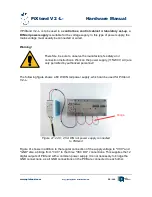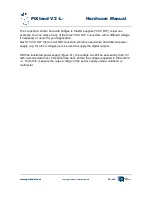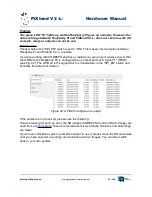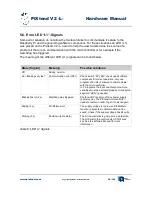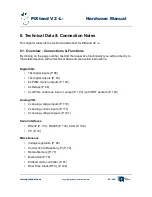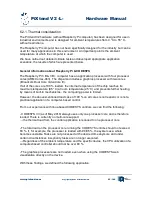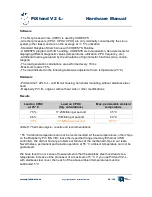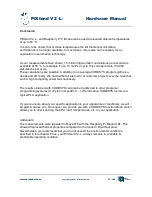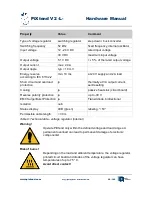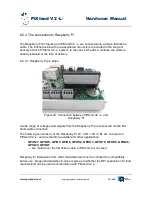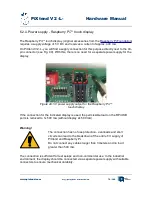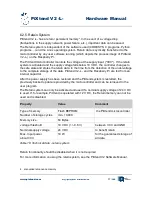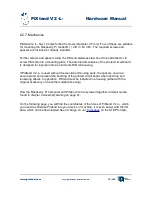
PiXtend V2 -L- Hardware Manual
Software
- The first processor core (CPU0) is used by CODESYS
- All other processors (CPU1, CPU2, CPU3) are only minimally consumed by the Linux
system (other tasks) and are on the average at <= 5 % utilization
- Standard Raspbian Stretch Linux with CODESYS Runtime
- CODESYS program with I/O handling, CODESYS web visualization, trend elements for
displaying different diagnostic values (temperatures, utilization, CPU frequency, etc.).
- Additional load is generated by the calculation of trigonometric functions (sine, cosine,
tangent)
- The load generation calculations are performed every 10 ms
- Maximum load is 75 %
- The load indicated in the following table was adjusted at room temperature (25 °C)
Hardware
- PiXtend V2.1 ePLC -L- on DIN rail housing, horizontal mounting, without stainless steel
hood
- Raspberry Pi 3 B - original, without heat sink or other modifications
Results
Load on CPU0
at 25 °C
Load on CPU0
(trig. calculations)
Max. permissible ambient
temperature
75 %
17.25 Million per second
45 °C
66 %
15 Million per second
50 °C
33 %
7.3 Million per second
55 °C*
Table 8: Thermal analysis - results and recommendations
* 55 °C ambient temperature can not be recommended. At these temperatures, other chips
on the Raspberry Pi 3 B & 3 B+ leave their specified range (memory, Ethernet / USB
controller). We did not find any problems or failures of the mentioned chips in our tests.
Nevertheless, permanent and reliable operation at 55 ° C ambient temperature can not be
guaranteed.
We have found in our series of measurements that the stainless steel hood leads to a
temperature increase of the processor of a maximum of 5 °C. If you use PiXtend V2 -L-
with stainless steel cover, then each of the above ambient temperatures must be
subtracted 5 °C.
www.pixtend.com
Copyright by Qube Solutions GmbH
66 / 146

